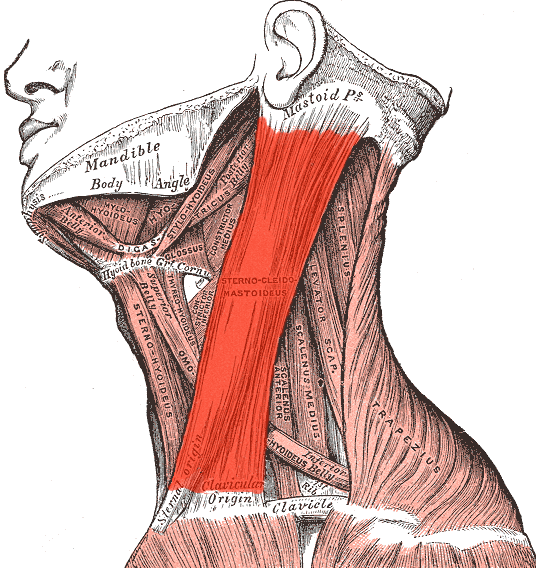Needle that SCM!
This article goes along well with the last one I published.
 We remember that we have 3 systems that keep us upright in the gravitational plane: The visual system, The vestibular system and the proprioceptive system. As we age, we seem to become more dependent upon the visual system to maintain stability of the head (which is . . .
We remember that we have 3 systems that keep us upright in the gravitational plane: The visual system, The vestibular system and the proprioceptive system. As we age, we seem to become more dependent upon the visual system to maintain stability of the head (which is . . .
Posted in: acupuncturecervical instabilitycleidoclinical testmastoidscalenescalenesscmsemicircularsensory nerve fiberssternosternocleidomastoidtrigger point dry needling instructionutriclevertigovestibular
Are we rehabbing the right system?
I have recently run across some research that has changed the way we look at some of the rehab I do, especially proprioceptive rehab. Perhaps it will do the same for you. We already know that needling can effect balance and proprioception, from some of the articles I have written here, here and here.

Posted in: afferentsbalancecervical instabilitychangesdiameterdry needlingdysfunctioninstabilitylarge diameter afferentslumbarlumbar instabilitymuscleneedlingproprioceptionproprioceptivequadratus lumborumsensationsensoryspinal instabilitysternocleidomastoidsystemtpdnvestibular
The Levator Scapula
levator scapula: from Ivo Waerlop on Vimeo.
 From its proximal attachment to the upper 4 cervical transverse processes to its distal attachment to the superior medial border of the scapula, this muscle has multiple actions:
From its proximal attachment to the upper 4 cervical transverse processes to its distal attachment to the superior medial border of the scapula, this muscle has multiple actions:
- elevating the scapula
- tipping the glenoid downward
- ipsilateral rotation of the . . .
Posted in: acupuncturecervicalcervical instabilitydry needlingdry needling instructiondry needling seminarintramuscular therapylevatorlevator scapulaneedlingpainrehabscapulashouldershoulder paintpdntriggertrigger point dry needling coursetrigger point dry needling instructiontrigger point seminar
Needling and Instability
As people who needle, we often emphasize needling the paraspinal muscles associated with the segemental innervation of the peripheral muscle you are needling. For example, you may needle the L2-L4 paraspinals (ie: femoral nerve distribution) along with the quads, or perhaps the C2 PPD’s along with the suboccipitals. We do . . .
Posted in: acupuncturecervicalcervical instabilityclinical examdenervationdry needlingexaminstabilitylumbarlumbar instabilityneedlingneurologyppdspacial summationspinalspinal instabilitysummationtemporaltemporal summationtpdntrigger point dry needling
Cover image credit: http://wallpapershacker.com/skulls_sketches_skeletons_spine_drawings_hd-wallpaper-1015286/
